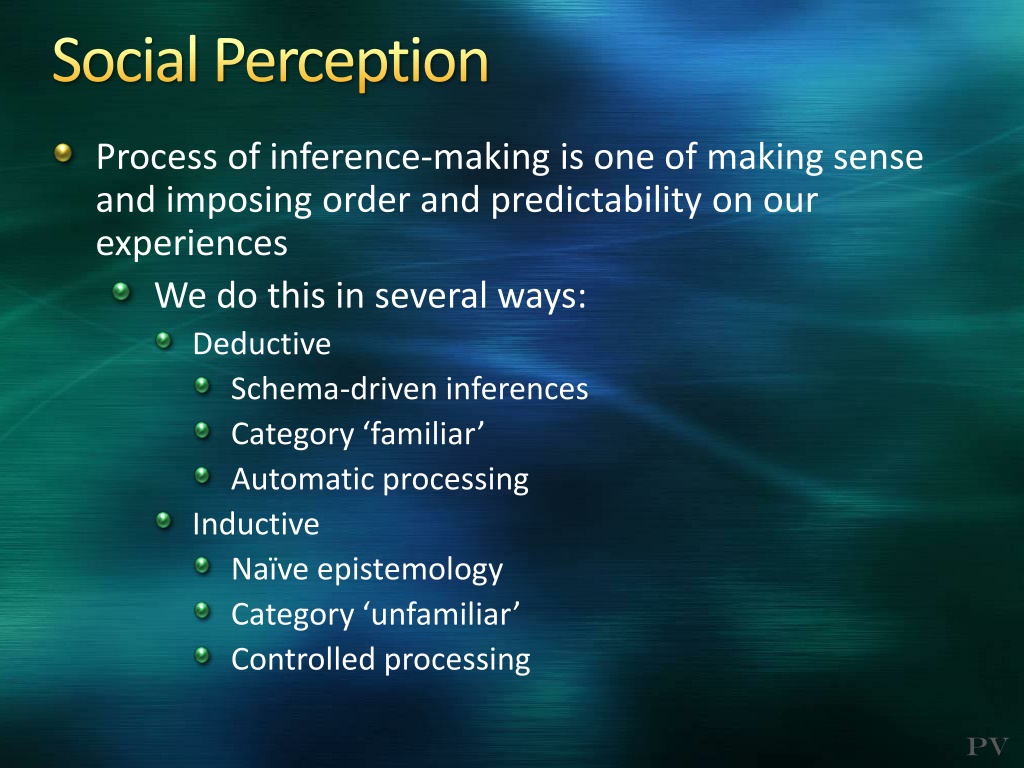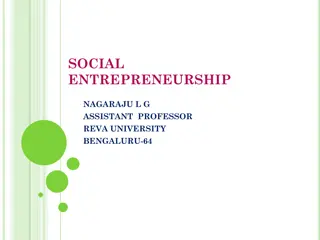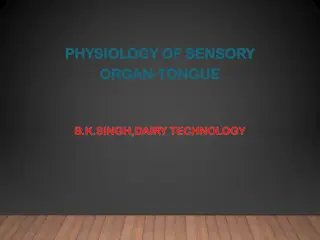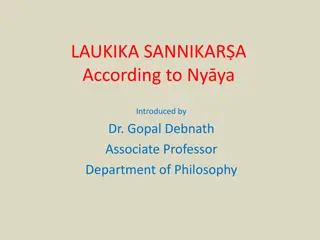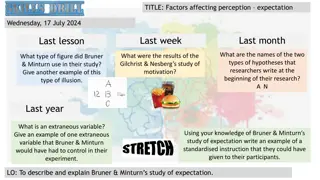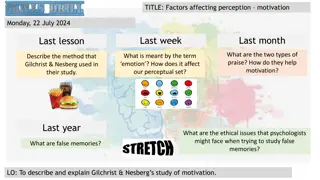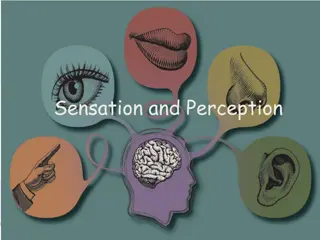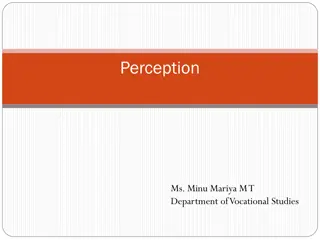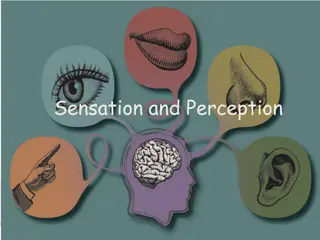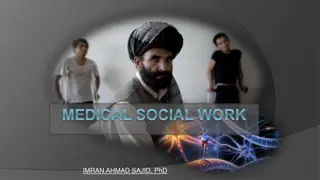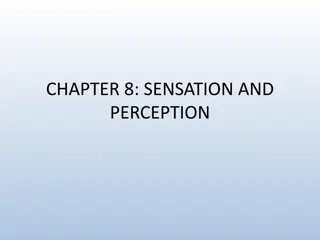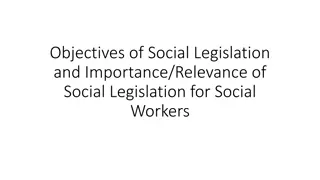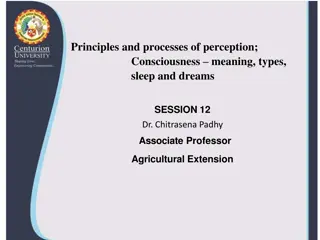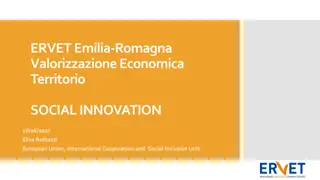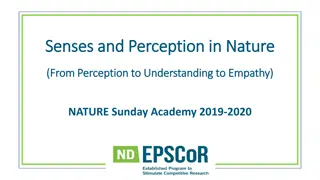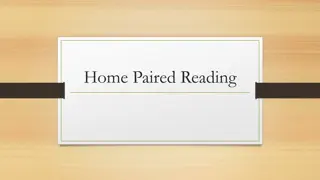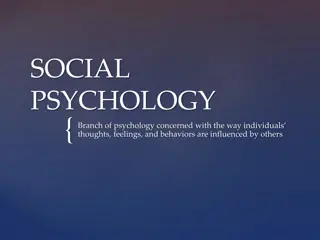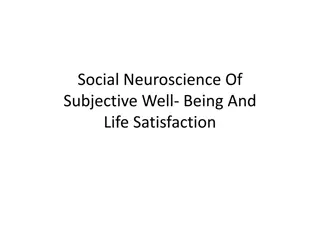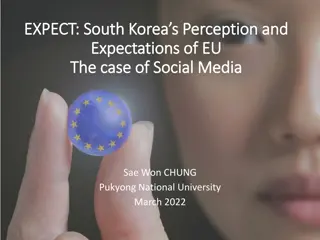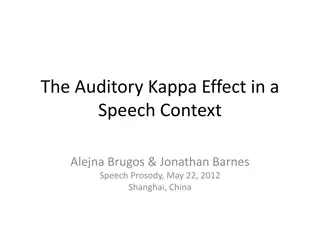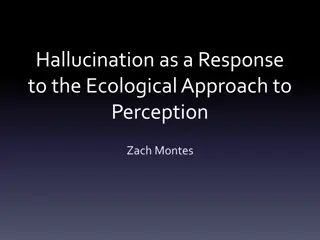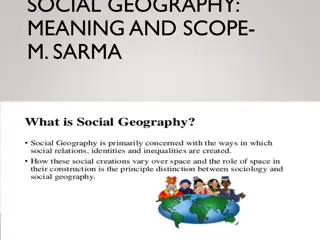Social Perception
Process involving inference-making, schema-driven deductions, and attribution theories in understanding behavior. Explore biases and decision-making processes influencing perceptions. Understand the commonness of behaviors and trait inferences. Images and figures provide visual representations of the concepts discussed.
Download Presentation

Please find below an Image/Link to download the presentation.
The content on the website is provided AS IS for your information and personal use only. It may not be sold, licensed, or shared on other websites without obtaining consent from the author.If you encounter any issues during the download, it is possible that the publisher has removed the file from their server.
You are allowed to download the files provided on this website for personal or commercial use, subject to the condition that they are used lawfully. All files are the property of their respective owners.
The content on the website is provided AS IS for your information and personal use only. It may not be sold, licensed, or shared on other websites without obtaining consent from the author.
E N D
Presentation Transcript
Social Perception Process of inference-making is one of making sense and imposing order and predictability on our experiences We do this in several ways: Deductive Schema-driven inferences Category familiar Automatic processing Inductive Na ve epistemology Category unfamiliar Controlled processing PV
Attribution Theory Describes how we arrive at decisions about the cause of people s behavior and why we arrive at specific decisions - Process of na ve epistemology Attributions are causal explanations for an event They suggest how and why something happened and who or what was responsible naturally this results in a causal account that influences subsequent decision making PV
Attribution Biases Actor/Observer Bias otherwise known as the Fundamental Attribution Error Actors emphasize situational features in their accounts of their behavior Observers tend to explain Actor behavior as largely due to something dispositional of the Actor Perceptual Account of the bias due to differences in the perceptual field of actors and observers Actor behavior engulfs the Observer PV
How Knowledgeable? 100 Questioner 90 Contestant 80 70 60 Average Student 50 40 30 20 10 0 Questioner's Ratings Contestant's Ratings Observer's Ratings
Attribution Biases False-Consensus Bias Tendency to see our behavior as more representative than it actually is Conversely, we view people s behavior that is different than ours as less common than it actually is Perceptual and ego defense explanations One of the most notable examples is the possibly apocryphal quip by The New Yorker film critic Pauline Kael, who reportedly said she couldn't believe Nixon had won since no one she knew had voted for him. PV
How Common is the Behavior? Strength of Trait Inferences Estimated Commonness of Agreement 62 % Estimated Commonness of Refusal 38 % About S who agrees to wear sign 120.1 About S who refuses to wear sign Ss who agree to 125.3 Ss who refuse to 33 % 67 % 106.8 139.7 How unusual is the person who disagrees with us?
Attribution Biases Self-serving Bias People claim responsibility for success and avoid blame for failure individuals offer more dispositional accounts for success and more situational accounts for failure Midas touch Benefectance ego enhancement and ego defense PV
Performance Attributions Internal Location Stability Stable Ability Unstable Effort External Task Luck Ego Enhancement Ego Defense vs. Claiming credit for success Refusing blame for failure
Attribution Biases Continuum reflecting information- processing/perceptual accounts versus self- esteem/ego accounts Perceptual Motivated Actor/observer False consensus Self-serving PV
Attributions & Decisions Much of decision making involves locating the cause of responsibility in order to facilitate decision making. Observed Behavior Information Cues Attributions Decisions Decision Constraints Consistency Schemas Policy Consensus stereotypes Resources Distinctiveness PV
Kelleys Covariation Theory Behavior Consistency Consensus Distinctiveness Low High Low High Low High What combination makes for strongest dispositional or situational causal attribution? Consider various possible combinations and how they may influence decision-making.
Nursing Supervisors Incident A patient had recently returned from surgery after a prostatectomy. Nurse Connaly (R.N.) checked this patient s condition and found him to be doing satisfactorily. However, she failed to tape down a catheter as requested in written order by the patient s surgeon. The untaped catheter was discovered by the surgeon and he reported this incident to you. The patient had suffered no ill effects. Work History Nurse Connaly has been on the job for 3 months and this is the first time she has made an error of this type, failing to complete a physician s order. Her performance on other tasks has generally been error free. Other R.N.s on this unit have made similar errors relating to the completion of physicians orders and this type of behavior has occurred on several occasions in the last year. EFFECTIVE EFFICIENT ENDURING - ENDEARING
Courses of Action Warn her privately Fire her Call her out publicly Assign a nurse to check other nurses work Provide her more training Train all nurses Review the procedures Compose a checklist Send an email to alert nurses this happened Call a team meeting with nurses you supervise Create a policy of punishments for errors No action on event Reward nurses for error- free work Conduct your own investigation with each nurse
ANOVA of Time-Project-Person Task/Role/Project Task/Role/Project New Sales X-Selling CSR Accounts New Sales X-Selling CSR Accounts Pam 3 2 Pam 3 2 Tom 6 6 Tom 7 6 Person Person Sue 3 4 Sue 4 5 Ray 2 7 Ray 6 1 Observation Period 1 Observation Period 3 Task/Role/Project Task/Role/Project New Sales X-Selling CSR Accounts New Sales X-Selling CSR Accounts Pam 2 2 Pam 3 3 Tom 4 6 Tom 6 4 Person Person Sue 4 3 Sue 4 5 Ray 6 6 Ray 6 2 6 Observation Period 2 Observation Period 4 What to do with each of these employees? Fails to meet 3; meets 4; exceeds 6
Personnel Actions Experimental Condition Personnel Actions (percentages) No Action Pay Raise Promotion 15 20 10 0 18 73 69 60 20 75 73 18 ABILITY Male Female EFFORT Male Female TASK EASE Male Female LUCK Male Female 31 54 70 23 9 15 20 0 9 77 15 25 PV
Inference based on Morphology Is beauty in the eye of the beholder or is it universal? Cross-species standards Symmetry as signal of reproductive health Neonate features Youthful, innocent, benign, harmless Mature Features Experienced, wise, calculated, potentially harmful Expressive Features Emotional, engaged, sympathetic pv PV
The Worlds Most Beautiful Woman UG females photographed with common background Photos of women measured on 24 facial features UG males viewed and rated each picture Ratings correlated with facial features From: Michael R. Cunningham. The Sociobiology of Beauty, Journal of Personality & Social Psychology
Schemas An associational network that organizes our Attention, Processing, and Recall of information Deductive theory of how the world works Spawns hypotheses and suggests credible tests of hypotheses Several Forms that schema take Stereotypes (group) Jim glasses geek Prototypes (person usually) Lincoln, Roosevelt, Reagan great president - leader Scripts (event) Interview script (interviewer or interviewee) scene 1: pre-contact activities scene 2: greeting & establish rapport scene 3: ask job-related questions scene 4: answer job-related questions scene 5: disengagement PV
PINK VIOLENCE Encounters may be schema-congruent or schema-incongruent i.e., category familiars or unfamiliars automatic versus controlled information-processing Bad Romance (Lady Gaga or Tiger Woods?) Hollywood (Hope or Despair?) Pumped up Kicks (nursery rhyme or creepy violence?) Viking Kittens PV
Attribution/Schema Summary Reflect processes that organize and interpret our world Attributions as exercise of na ve epistemology Schemas as theories of the world hypothesis confirmation bias hypothesis disconfirmation and controlled processing The source of many prejudices (prejudgments) we have of others and the things we encounter adaptive but potentially dysfunctional PV
